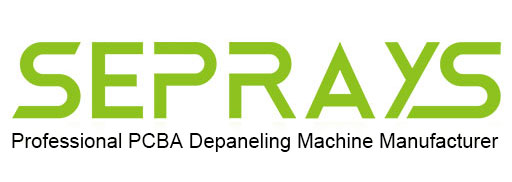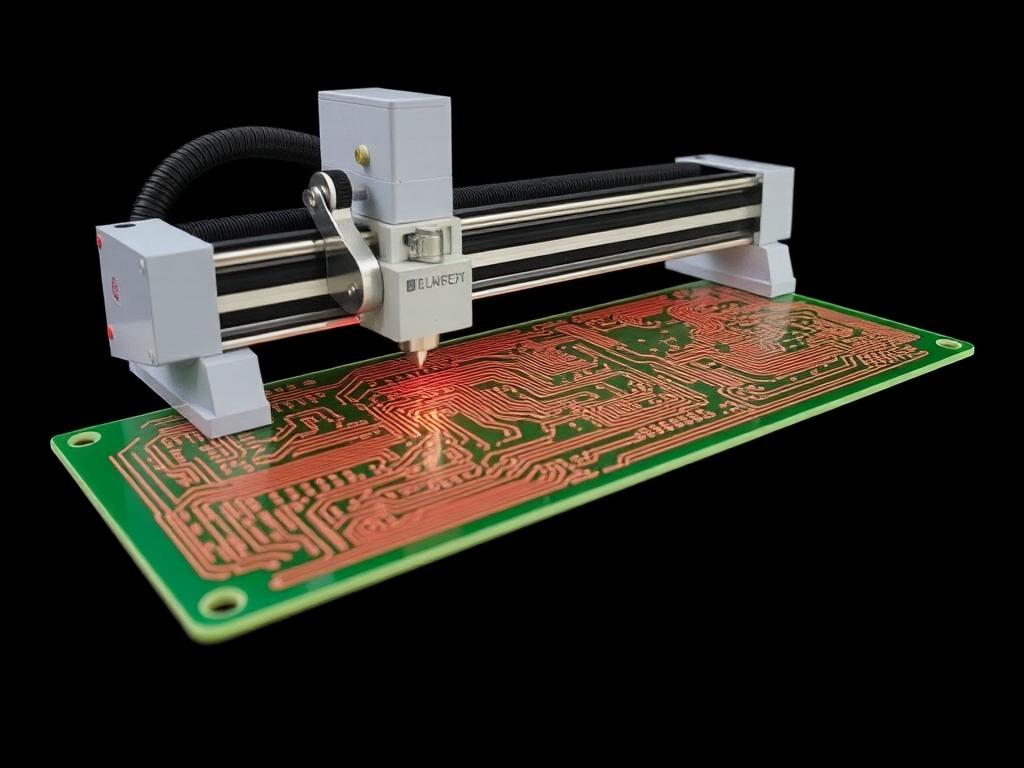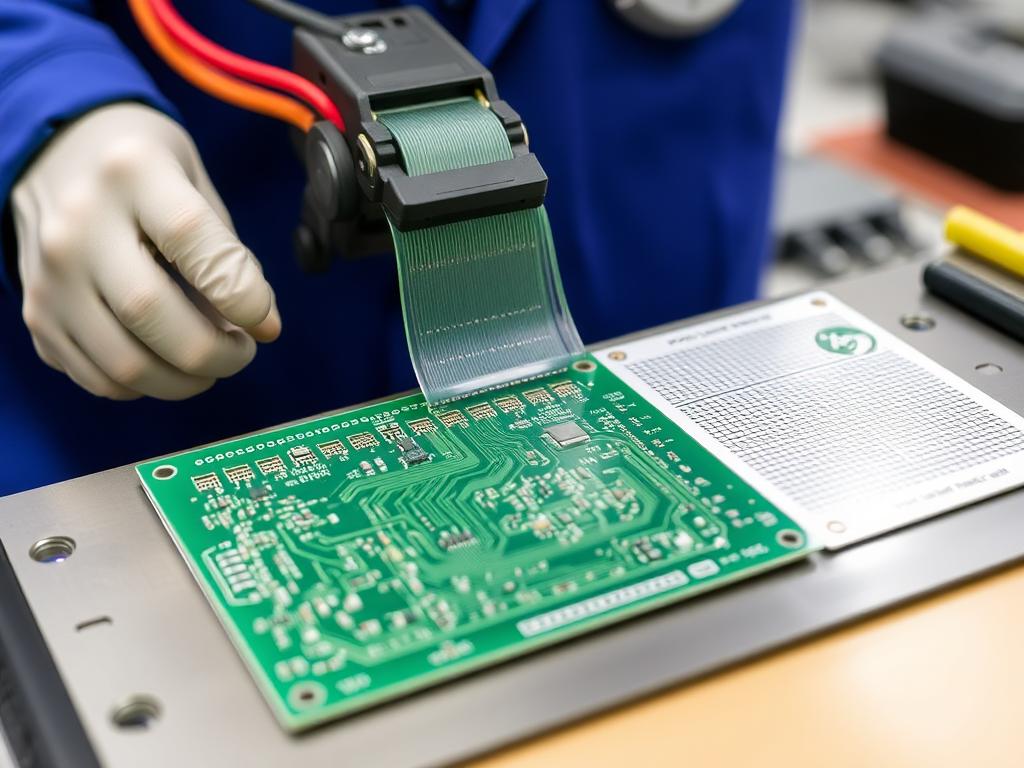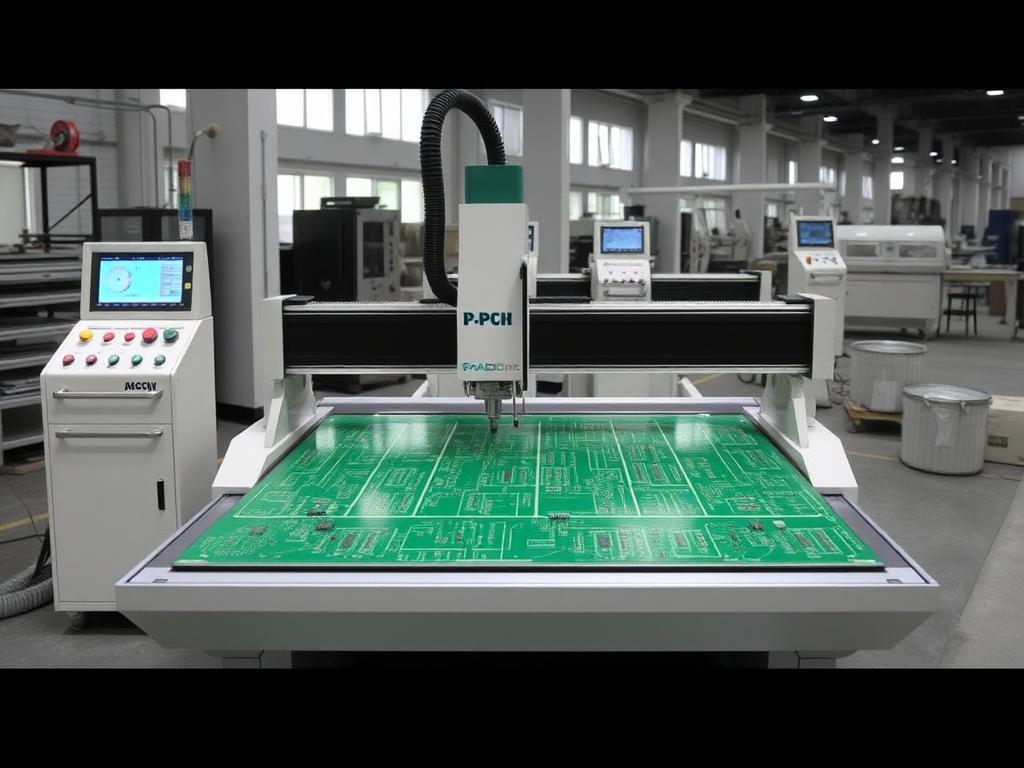![]()
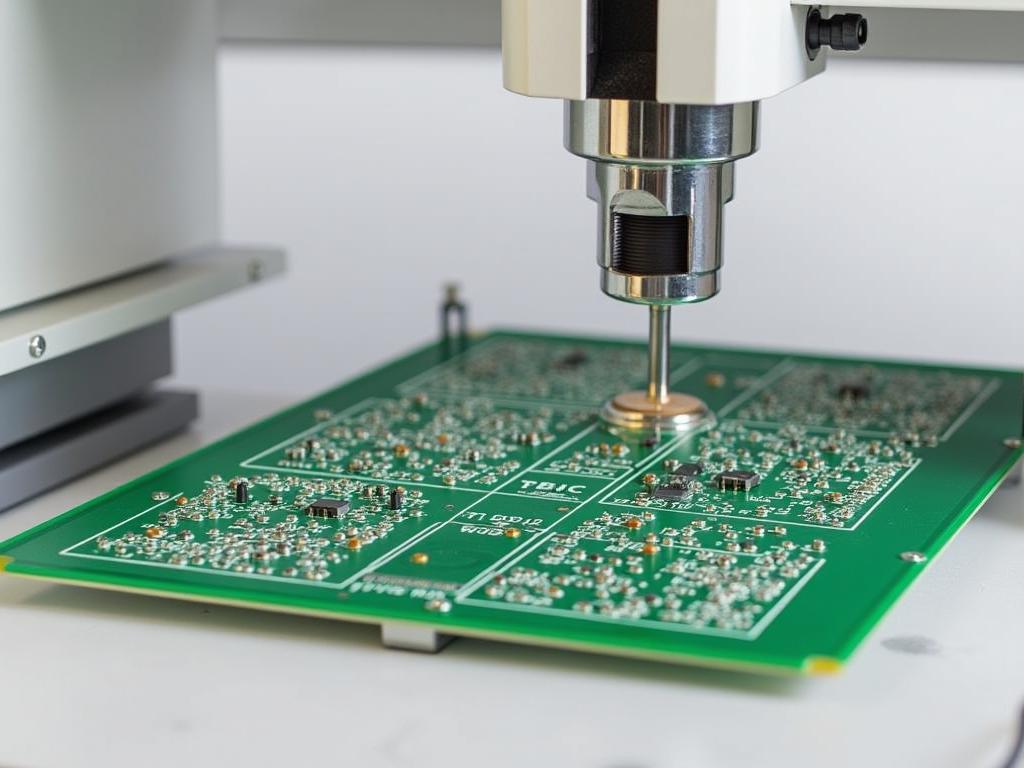
Precision PCB depaneling equipment
High Precision PCB Depaneling Machines: Revolutionizing Your Circuit Board Separation Process
Hey there! As someone deeply immersed in the world of PCB manufacturing for over 20 years, I’ve seen firsthand how crucial efficient and precise depaneling is to the entire process. This article will delve into the various methods of PCB depaneling, the technologies that drive them, and how choosing the right equipment can dramatically improve your production efficiency and final product quality. Whether you’re a large electronics manufacturing factory or an individual PCB player, this comprehensive guide will provide valuable insights to optimize your processes. Let’s get started!
What is PCB Depaneling and Why is it Essential?
In the dynamic world of electronics manufacturing, cartes de circuits imprimés (PCB) are fundamental, forming the backbone of almost every electronic device. After the assembly of components on the PCB panneau, le séparation of individual planches ou circuits imprimés est un élément critique processus known as dépanelage. Ce processus is far from trivial; it needs to be done precisely and reliably, to avoid damage to the conseil or its delicate composants. For many years the traditional approach to depaneling has been manual – an opérateur handling each panneau et en séparant le planches using a hand-held coupeur. This method is, however, slow, prone to error, and lacks the précision required for modern électronique. In today’s competitive and constantly changing world, the need for haute précision dépanelage is more important than ever to assurer le fiabilité et high-quality of finished products.
The necessity of Dépaneillage de PCB stems from the fabrication processus itself. To enhance production efficiency, multiple circuits imprimés are usually produced on a single panneau. Le dépanelage stage is where these individual planches are carefully separated. This separation is required to be performed in a way that maintains the integrity of each conseil, without creating stress sur le tableau, affecting souder joints, or causing damage to any composant ou coating. It is more than just a cutting action, it’s about creating clean, consistent, and damage-free planches. This is crucial, as even minor inconsistencies can cause functional problems that would be costly to resolve. This critical processus sets the stage for the quality of the end product. So, proper dépanelage is not just about speed, it’s about precision, consistency, and the prevention of potential defects which could be a major cost for your company.
Why Choose Laser Technology for PCB Depaneling?
As technology advances, so too do the methods we use to manufacture electronics. Dépaneillage au laser has become a cutting-edge solution that provides an ideal mix of précision and efficiency. Unlike traditional mechanical methods that may induce stresser sur le conseil, un laser system uses a focused beam of light to séparé le circuits imprimés. This non-contact approach minimizes the risk of damage, especially when dealing with composants sensibles. Traditional methods involving a coupeur, such as a routeur, can produce dust and burrs, necessitating additional cleaning steps. However, with découpe laser, a clean, precise cut is achieved with minimal impact on the conseil. Also, dépanelage au laser offers unparalleled flexibilité. Whether it’s a simple square conseil or one with intricate outlines, the laser can adapt to various shapes and sizes, easily accommodating design changes.
When considering the speed of production, un Système de dépaneillage au laser stands out. It offers a significantly faster processus de dépanélisation par rapport à manuel methods or even traditional mechanical systems. What used to take a long time for an opérateur to do, can now be completed in a fraction of the time through automation, speeding up your entire production cycle. The laser depaneling process also allows for the integration of features like fiducial recognition. This means the machine can automatically detect the position of the planches sur le panneau and adjust the coupe path accordingly. This increases the précision of the cut. Using laser ensures a high level of fiabilité in your overall manufacturing operations, as well as greater consistency and minimal errors. Choosing the correct technology can make or break your processus de fabrication, laser technology offers the most modern, reliable, and précis way to carry out your démontage de PCB.
How Does Laser Depaneling Ensure High-Precision Cutting?
La magie derrière dépanelage au laser lies in its ability to use a very focused beam of light to cut or séparé le circuit imprimé de la panneau avec extrême précision. Unlike mechanical methods that use physical force, découpe laser achieves separation by vaporizing or ablating the material. This results in a clean cut with minimal or zero contrainte mécanique sur le conseil. Think of it like a surgeon’s scalpel, but with light. The precision of dépanelage au laser is largely attributed to the use of high-performance systèmes laser and advanced control software. These systèmes laser, si Laser UV, CO2, or fiber lasers, offer different specification ranges, each optimized for specific types of materials and thicknesses. The beam itself is extremely small, allowing for the precise cutting of even the most intricate shapes.
Advanced control software plays a vital role in ensuring the accuracy of dépanelage au laser. These systems have algorithms that are able to optimize the coupe path, speed, and power of the laser to achieve the best possible result. Features like fiducial recognition allow the laser system to automatically locate the planches sur le panneau and make any necessary adjustments to the cutting process. All of this ensures that each circuit imprimé is cut precisely according to specification. Moreover, since dépanelage au laser is a non-contact processus, it eliminates the wear and tear on tools, reducing the need for frequent coupeur replacements and maintenance. This ultimately leads to reduced operational costs and higher efficiency. With laser technology we can guarantee the highest levels of précision and consistency, which is essential for your final product’s fiabilité.
What are the Advantages of Automated Depaneling Systems?
In the ever-evolving world of fabrication de produits électroniques, automation is a must to stay competitive. Automated dépanelage systems provide a plethora of advantages, drastically changing the way we approach circuit imprimé (PCB) séparation. Perhaps one of the most compelling benefits is the increase in Débit. With an automated system, planches can be séparé rapidly and consistently, vastly surpassing the speed of any manuel operation. This means you can process more panels in less time, significantly boosting your production efficiency and reducing lead times. Additionally, automation reduces the risk of human error. In a manual process, an opérateur may make mistakes, which can lead to damaged planches and increased scrap rates. Automatisé machines perform the dépanelage processus consistently, with high levels of précision and reliability every single time.
Beyond just speed and accuracy, automation reduces labor costs. While an initial investment is needed for the machine, the decrease in the number of operators and the reduction in rework and scrap will soon lead to significant épargne. This can allow companies to reallocate resources to other areas of the business. With an automated machine, you also have far greater flexibilité. Automatisé systems are designed to handle a variety of conseil sizes and shapes. With the automation technology, you can rapidly adapt to new designs, with minimal passage times. Automation also comes with a high level of predictability. Once the system is set up and configured, it will consistently produce results at the desired quality level, giving you consistent results. In short, automated depaneling offers a powerful combination of higher Débit, reduced costs, greater fiabilité, et flexibilité, which is very hard to achieve any other way.
Which Depaneling Method is Best for Sensitive Components?
When we are working with circuits imprimés avec composants sensibles, the method of dépanelage we choose matters more than ever. Mechanical methods that involve cutting or punching with a coupeur can create stresser and vibrations that can potentially damage or dislodge these delicate parts. Dépaneillage au laser, on the other hand, offers a gentle approach by using a precise beam of light to séparé le planches, making it the preferred method for circuits imprimés with sensitive parts. The non-contact nature of the procédé laser means there is no physical contact with the conseil itself, therefore minimizing the risk of damage to sensitive components. Also, the focused beam generates minimal heat, which reduces the likelihood of thermal damage to temperature-sensitive parts.
Alors que dépanelage au laser is widely recognized for its gentleness, it is also important to understand the specific laser system that’s used and its parameters. Laser UV systems, for example, are ideal for materials that are sensitive to heat, as they produce a very small heat-affected zone. However, for thicker planches, CO2 or fiber systèmes laser might be a more suitable choice. In choosing the method that’s right for your démontage de PCB needs, you must look at the type of composants and the specific requirements of the job. We can equip you with the technology to make sure you are handling sensitive parts with the best and most precise method to help guarantee high-quality results. You no longer need to worry about any damage to composants sensibles, by choosing the right Système de dépaneillage au laser.
What are the Key Differences Between Manual and Automated Depaneling?
As we’ve mentioned already, the world of démontage de PCB has evolved tremendously over time, moving from primarily manuel methods to a more high-tech automated approach. Understanding the key differences between the two methods is vital for deciding which suits your production requirements. The first, and perhaps most obvious, difference is the speed and efficiency. Manual depaneling, where an opérateur separates the planches using hand tools, is very slow, and time consuming. It’s also not consistent because human error is unavoidable. On the other hand, automated machines can perform dépanelage operations significantly faster and with greater consistency. This is crucial for handling high-volume production runs, where even minor improvements in efficiency can lead to huge épargne.
Moreover, the level of précision differs considerably. Manuel methods depend on the operator’s skill, which can lead to variability in the quality of séparation. Automatisé systems, particularly those using laser technology, offer a far higher degree of précision, with minimal chance of error. Additionally, manual depaneling can be very labor-intensive, and require a lot of opérateur interaction, which, in the end, will lead to higher costs. Automatisé machines require less human input, which reduces costs for both labor and material waste due to errors. Also, when it comes to flexibilité, manuel methods may seem adaptable for a variety of conseil shapes and sizes, automated systems, especially those with laser, can also handle a multitude of different designs with easy passage. The key takeaway is that while manual depaneling is still practical for small scale projects or prototyping, automated depaneling offers greater efficiency, consistency, précision, and lower costs for larger production runs.
Considering an Innovative Solution for High-Volume PCB Production?
For companies that are constantly dealing with high-volume Production de PCB, finding a dependable and efficient dépanelage solution is paramount. In today’s fast-paced industrie électronique, it is more important than ever for a manufacturer to ensure that their processes are optimized to meet demand while maintaining high quality. Innovative systèmes de dépaneling, particularly those using laser technology, offer a robust and scalable solution to meet these very demanding needs. The high speed of dépanelage au laser allows you to quickly handle large quantities of circuits imprimés, dramatically improving Débit and reducing turnaround times. This quick turnaround will help you to meet tight deadlines and stay ahead in your very competitive marketplace.
Moreover, these innovative systems are not just about speed, but also flexibilité and adaptability. Modern dépanelage au laser machines can quickly adjust to different conseil sizes and designs, making them suitable for a wide variety of production needs. This flexibilité is very valuable because it allows you to rapidly adapt to changes in product designs without having to invest in new équipement. By integrating features such as fiducial recognition and automated material handling, these systems can also operate seamlessly in a fully automated production environment, further decreasing the need for manual intervention. Systèmes de dépaneling laser offer not just an innovative solution for high-volume Production de PCB but also a path to more efficient, reliable, and high-quality fabrication.
Can We Provide a Solution That Meets Your Specific Depaneling Requirements?
With so many different démontage de PCB technologies and methods available, it’s essential to choose a solution that precisely fits your specific exigences. We understand that every processus de fabrication is unique, with varying demands for speed, précision, material, and budget. That’s why we offer a vast range of équipement de dépaneillage, from the most advanced systèmes laser to more traditional mechanical methods, all designed to meet a variety of different needs. Whether you need to handle flexible printed circuit boards (FPC), very thick circuits imprimés, or have composants sensibles, we have the right équipement for you. Our team of experts is ready to help you through the selection processus, making sure you choose the système de dépaneling that perfectly matches your specific needs.
We don’t just provide équipement, but also tailored solutions that integrate seamlessly into your existing production line. We work closely with you, taking into consideration your specific requirements, whether it’s the automation level, the required Débit, or the type of material you are working with. Our goal is to deliver a dépanelage system that not only meets but exceeds your expectations in terms of efficiency, précision, et fiabilité. From en ligne automation to stand-alone machines, our range is designed to meet different production volumes and layouts. If you’re unsure where to start, get in touch. We are more than ready to help you navigate the complexity and create a bespoke solution that meets your very specific requirements. Let us help you find the perfect solution pour votre dépanelage exigences.
How Can You Achieve Lower Cost and Higher Throughput in Your Depaneling Process?
In the fabrication de produits électroniques world, the dual goals of lowering costs and improving Débit are always at the top of the priority list. Optimizing your dépanelage processus is a key step in achieving both of these goals. Upgrading from a manuel or semi-automatic approach to a fully automated système de dépaneling can lead to significant cost épargne. While the initial investment might appear high, the long term benefits, including lower labor costs, reduced material waste, and higher Débit all lead to very quick return on the investment. An automated system will consistently deliver high-quality results with minimal need for rework. When we improve Débit we can get more done in less time.
Choisir le bon technologie can also contribute significantly to cost reduction and improved Débit. Dépaneillage au laser, for instance, provides a non-contact method, which results in fewer damaged planches and a reduction in material waste. The higher speed of découpe laser and minimal need for coupeur replacement also decreases operational costs. If you combine the laser system avec un convoyeur, you will further automatiser le dépanelage processus, thus increasing efficiency and ensuring a continuous work flow. Choosing the correct système de dépaneling, we can tailor a solution that meets your specification, maximizes Débit, and drives down your overall production costs.
Ready to Optimize Your PCB Separation Process? Contact Us Today for a Quote!
After going through the various technologies and methods for démontage de PCB, I hope you have a clearer understanding of how the correct équipement peut transformer votre processus de fabrication. Whether you are dealing with flexible boards, composants sensibles, or high-volume production runs, our team is ready to assist you in finding the ideal solution for your needs. From the precision of dépanelage au laser to the reliability of automated systèmes, we have the expertise and équipement to optimize your circuit imprimé séparation processus. Don’t allow manuel and outdated methods to slow down your operations or compromise your product quality, let us help you find the perfect fit for your business and bring your production to a whole new level!
Click here to explore our range of haute précision équipement de dépaneillage and discover how we can create a custom solution that improves your manufacturing processus and drives down your operating costs. Reach out to us today! Let’s discuss your needs, answer any questions, and offer a personalized citation to equip your factory with the best machine de dépaneillage de circuits imprimés on the market. We are very confident we can help your company with your circuit imprimé besoins. Contactez-nous now! Let’s begin your journey to more efficient, reliable, and high-quality démontage de PCB!
FAQ
What is the difference between V-groove and router depaneling? V-groove dépanelage uses a wheel or blade to cut along a pre-scored line (V-score or coupe en V) on the panneau, which is ideal for straight line séparation. Routage uses a rotating coupeur to cut out shapes, it is much more suitable for complex curves and non-linear shapes.
En quoi le dépaneling laser se compare-t-il au dépaneling mécanique ? Dépaneillage au laser offers greater précision and minimizes contrainte mécanique sur le conseil, ce qui le rend idéal pour composants sensibles. Mechanical dépanelage, which involves methods like routing or punching, can be quicker but may induce stresser and vibrations.
What type of laser is best for PCB depaneling? The right laser depends on the type of material and application. Lasers UV are ideal for sensitive materials and thin planches due to their small heat affected zone. CO2 and fiber lasers are suitable for thicker planches et plus haut Débit production.
Can I automate my PCB depaneling process? Absolutely! We offer a range of automated depaneling systems, including in-line machines with convoyeur belts, which can greatly increase Débit, improve consistency, and reduce human error in your processus de fabrication.
What are the advantages of in-line automation? En ligne automation allows for a continuous workflow, integrating dépanelage with other steps in your production line, leading to improved efficiency, reduced material handling, and lower overall production frais.
Principaux points à retenir :
- Dépaneillage de PCB is a critical process for séparer individuel circuits imprimés after assembly on a panneau.
- Dépaneillage au laser est un haute précision, low-stress method suitable for composants sensibles.
- Automated depaneling systems offer higher Débit, reduced labor costs, and improved consistency.
- Choisir le bon équipement de dépaneillage est crucial pour optimiser votre processus de fabrication.
- Nous proposons une gamme de solutions to meet the diverse exigences de la industrie électronique.
- We work with big brands like TP-LINK, Canon, BYD, Flex, TCL, Xiaomi, Lenovo, OPPO, HONOR, Foxconn and many more!
- Contactez-nous today for a tailored citation et prends ton production to the next level!
Liens internes :
- Découvrez notre gamme de Machine de routeur de carte PCB options.
- En savoir plus sur notre Dépanneaux à rainure en V solutions.
- Découvrez notre Poinçonneuse PCB/FPC équipement.
- Découvrez notre Équipement automatique pour une production rationalisée.
- Find the right Accessoires to support your machines.
- Explorez notre Équipement de ligne complète SMT offrandes.
